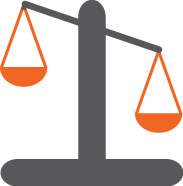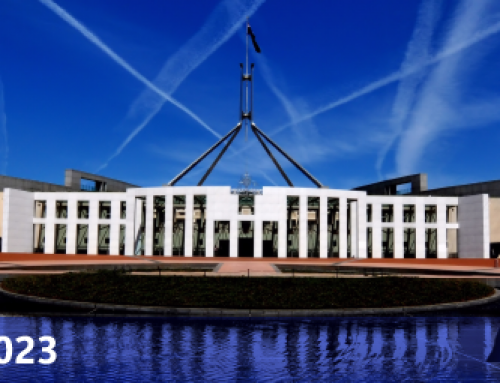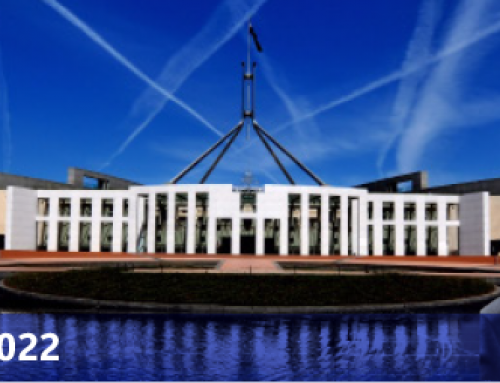It’s that time of year again!
The financial year ending 30 June 2014 is fast approaching and now is the time to start preparing! This newsletter is provided to give you some things to think about which will help you to best manage your taxes, build your wealth and better your financial position for you and your family. Some actions (such as accessing the Government co-contribution or obtaining a tax rebate on super contributions made for a spouse or contributing to your First Home Saver Account) may require you to act now by making a payment into your super fund or arranging with your payroll department at work to have this payment made in your June salary.
Remember that the deadline for lodging a tax return is 31 October 2014 (or the end of March 2015 if you are using a registered tax agent).
Tax return tips
Remember to include in your tax return all deductible items such as work related expenses and charitable donations. If you are earning income as an employee, you are automatically entitled to claim work-related expenses up to $500 for the 13/14 financial year without having to furnish receipts. Work related expenditure must be truly work related and you may need receipts to substantiate the expenditure. Home office and work related education expenses may also be claimed. Always remember to keep your receipts!
Remember also that you can offset any capital gains against capital losses and prepay interest on investment loans (interest on loans used to buy investments can be tax deductible and, you can pre-pay up to 13 months of interest on the loan and bring next year’s deductible interest payments forward into this tax year).
There may be other deductions, rebates or offsets that you are entitled to. Talk to you accountant to see if any apply to you.
Personal income tax rates
The personal income tax rates which apply from 1 July 2014 are as follows:
*Excluding Medicare Levy of 2%
** Including the 2% Temporary Budget Repair Levy announced in the 2014 Federal Budget which will be in place until 30 June 2017.
Contribution splitting
“Splitting” your concessional super contributions (i.e. your 9.25% SG and any Salary Sacrifice contributions) with your spouse may minimize tax and produce other benefits. Under the current rules, you can transfer up to 85% of your concessional contributions to your spouse’s super fund (provided your spouse is under 65 and not retired). If your spouse is older than you, this may also allow you to access this money earlier. To split your contributions for this financial year, the appropriate form must be submitted to your super fund.
We suggest that you seek professional advice to see if this strategy would benefit your situation.
Spouse contributions tax rebate
If your spouse earns under $10,800 in taxable income, an 18% tax rebate is available to you if you contribute up to $3,000 into their super account. This equates to a $540 rebate on your tax. Between $10,801 and $13,800, this rebate gradually reduces to nil. These contributions must be made from after-tax income and must be made into your spouse’s super account before 30 June 2014 in order to be claimed in the current financial year.
[fusion_old_table id=7 /]
Obtain a Government co-contribution
Currently, if you, your partner or someone you know earns less than $48,516 per year and makes an after tax (or “personal”) contribution to their super fund before 30 June 2014; they may be eligible for a Government Co-contribution of up to $500. Although not as generous as in previous years, the Government Co-contribution Scheme remains an excellent way to boost your super savings. Look at it as a Government 50% tax rebate on your money! Remember that assessable income for co-contribution purposes includes any salary sacrifice contributions you may be making.
If you are eligible for the Government co-contribution this financial year, now is the time to make your personal contributions of up to $1,000 into your super account before 30 June 2014. Most super funds allow you to do a BPay, EFT or cheque payment. Alternatively, organise this from your June pay by contacting your payroll office.
If you are uncertain as to how much you should contribute in order to secure a Government Co-contribution, contact Harvest for assistance. In the next column is a table to illustrate the indicative expected co-contribution available to you up to 30 June 2014.
[jbox vgradient=”#fdf2ea|#fdf2ea” shadow=”7″ jbox_css=”border:2px solid #f26522;” title=”Tip: Contribute your tax refund to super“]You can contribute your tax refund into super. This may give you (depending on your taxable income) a government co-contribution in the next financial year. This can be an effective way to grow your super and get a little bit extra from the government.[/jbox]
Government co-contribution scale for 2013/2014
[fusion_old_table id=8 /]
Get your kids started on the road to Super!
Anyone earning up to $33,516 can put up to $1,000 into their super and the government will add up to $500 to that. There’s no age minimum, they just need a tax file number and have earned income from a job. Make a $1,000 contribution into the super account of your working children and they will get up to an extra $500 from the government.
The Government Co-contribution is a great way to give your kids a head-start in building up their super.
Salary sacrifice into super and you could save tax
Extra super contributions via salary sacrificing can be very tax advantageous (up to certain limits). Although any salary sacrifice contributions are “preserved” (i.e. remain within super), the contribution tax rate (15%) compares very favourably to most people’s marginal tax rate. Talk to Harvest if you believe salary sacrifice would benefit you.
Example:
Paul is 45 and receives an annual salary of $75,000pa. He decides to salary sacrifice $833 per month (i.e. $10,000pa) into his super.
[fusion_old_table id=9 /]
[fusion_old_table id=10 /]
By re-arranging his package, Paul has effectively given himself a nearly 3% pay rise!
[jbox vgradient=”#fff2f3|#fff2f3″ shadow=”7″ jbox_css=”border:2px solid #ed1b24;” title=”Warning: Limits on salary sacrifice contributions“]Salary sacrifice is an arrangement between you and your employer in which you elect to contribute part of your gross salary into super under the company plan. Salary sacrifice form part of your concessional contributions (which also include your employer’s 9.25% compulsory SG contributions) and are subject to the concessional contributions cap which places a limit on the amount which can be contributed to super at the low super contribution tax rate of 15%.
Until 30 June 2014 the cap for those aged 60 or under is $25,000 per annum. For those aged 60 and over, the current concessional contributions cap is $35,000 per annum.
From 1 July 2014 the cap for those aged 50 and under will rise to $30,000 per annum and the cap for those aged 50 and over will increase to $35,000 per annum.
If you are currently making salary sacrifice contributions or commencing salary sacrifice contributions, take care not the exceed these caps as contributions above these caps are taxed at your marginal tax rate rather than at the concessional tax rate of 15%.[/jbox]
[jbox vgradient=”#fdf2ea|#fdf2ea” shadow=”7″ jbox_css=”border:2px solid #f26522;” title=”Tip: Seek advice“]If you are considering beginning to salary sacrifice into your super account, we suggest that you seek professional financial advice to make sure it would benefit you.[/jbox]
Transition to retirement (TTR)
Harvest has assisted many employees to adopt a strategy that allows an employee to commence a pension from their super, from the age of 55 and/or concurrently sacrifice a portion of their salary into super. This is called a “Transition to Retirement (re-contribution) strategy”. If you are over age 60, this strategy works even better (as income and capital gains are generally tax free) and should be considered. By utilising the much lower taxes found within super (up to 15%) compared with investing outside of super (up to 46.5%); this can be a very tax effective strategy to boost your super investments in the years before your retirement.
For those employees looking to reduce their working hours in the years before retirement, a “Transition to Retirement” strategy allows an employee to supplement their reduced employment earnings by drawing a corresponding “top up” amount from their super (which allows you to work less hours but have the same income). You should seek advice on using your super for this purpose. Please see your financial adviser or call Harvest for help.
Have your prepared your Will?
A properly drawn up Willprotects the interests of you and your family should anything happen to you. You can also tell your super fund that you wish any death benefits that may become payable to be paid into your Estate. Simply complete a Nomination of Beneficiary form from your fund. You can also nominate your Spouse (incl. Defacto Spouse and same sex partner), children and anyone financially dependent on you.
[jbox vgradient=”#fdf2ea|#fdf2ea” shadow=”7″ jbox_css=”border:2px solid #f26522;” title=”Tip: Estate planning“]
1. Will
It is often best to get your Will done properly by a qualified solicitor. Ask them for a quote first and plan ahead to think about who you would like to be your Will’s executor, and your Power of Attorney and who would like to be the beneficiary(ies) of your estate.
2. Consider a Testamentary Trust
Also ask about Testamentary Trusts. Your solicitor will be able to advise you whether these are right for you.
3. Beneficiary Nomination in Super
It is also important to ensure that your super fund has an up to date and valid Beneficiary Nomination for you. [/jbox]
Insurance through super
Using your super account to pay for Life and/or Income Protection insurance can be a very tax effective way of securing insurance cover.
Further, you are likely to secure lower premiums by utilising wholesale premium pricing and associated discounts available by being a member of a “group” or employer scheme.
It is prudent to ensure that your desired level of insurance cover is well established before canceling any existing super or insurance cover. Note that many super funds now offer a service whereby existing insurance can simply be transferred into your new super fund.
Contact Harvest if you would like more information or help in doing this.
Covering yourself against critical illness
Recent data from the Munich Re-insurance Group shows that a 30 year old man has a 21% chance of contracting cancer before age 70 [20% for women]; a 16% chance of a stroke or heart attack [5% for women] and a 15% of contracting some form of critical illness (like kidney failure, Motor Neurone Disease or Parkinson’s) [14% for women].
A NATSEM report (2003) calculated that living expenses alone during a period of critical illness could cost $80,000 per year. However, for example, a 44 year old male, white collar worker could secure $100,000 worth of cover in the event of a critical illness for around $450 pa.
Don’t forget Critical Illness (also known as “Trauma”) when you and your spouse or partner are reviewing your insurance cover needs. It’s an important part of your wealth protection strategy.
Contact us if you would like a quote to cover yourself in the event of a Critical Illness. Click Here
SG contribution rate increases
The Government has announced that the compulsory employer SG Contribution Rate will increase to 9.50% from 1 July 2014 (rather than being frozen at 9.25% as previously announced). Further, the 9.50% will then be frozen for 4 years. The SG rate will then begin to increase once again from 1 July 2018, increasing by 0.5% per annum until it reaches 12% from 1 July 2022. The timetable for the SG Rate increases is as follows:
[fusion_old_table id=11 /]
After-tax contributions
You may wish to consider making contributions to you super account from your after-tax income. These contributions are known as non-concessional contributions and can be an effective way to reduce tax, particularly on the investment earnings of that money if contributed to super. Investment earnings in super are taxed at a maximum of 15% (often less) rather than at your marginal tax rate.
There is an annual limit on the amount of non-concessional contributions you can make. The cap is currently $150,000 (or $450,000 for 3 years at once). From 1 July 2014 this annual limit will increase to $180,000 per annum ($540,000 for 3 years at once)
Review your investments
The end of the financial year offers a good opportunity to review you investments to determine whether you are content with the performance of the assets you hold and to ensure that your asset allocation continues to match your personal risk profile. Perhaps you hold assets which are underperforming and make sense to sell or perhaps you have carry-forward capital losses which you can use to minimise your net capital gains and thus reduce your capital gains tax liability.
If you are making changes to your assets, be weary of ‘wash-sale’ rules. A ‘wash-sale’ involves the sale and immediate repurchase of the same investment in order to either realise a capital loss or reset the cost base of that investment. This is considered tax avoidance by the ATO and is harshly penalised.
[jbox vgradient=”#fdf2ea|#fdf2ea” shadow=”7″ jbox_css=”border:2px solid #f26522;” title=”Tip: Update SMSF insurance and investment strategy“]If you are either a trustee of a self-managed super fund or a director of a corporate SMSF trustee, now is a good time to review and update your investment strategy to ensure that the
SMSF’s investments have been made in accordance with it’s Trust Deed.
As a trustee of a SMSF you are also now required to be able to demonstrate that you have given due consideration to the insurance needs of the members of the SMSF.[/jbox]
Unclaimed Super
From 1 July 2013, the Government will transfer to the Australian Tax Office (ATO) the balance of all unclaimed super accounts with less than $2,000 for which a member has been unidentifiable for more than 12 months. This extends to bank deposits (but unclaimed for at least 3 years), First Home Saver Accounts and life insurance proceeds. If the owner finds and claims the money, the ATO will pay interest on the unclaimed money at a rate equivalent to the inflation rate.
You can search for any lost super accounts you may have online using the ATO’s SuperSeeker tool available at:
https://www.ato.gov.au/calculators-and-tools/superseeker/
First Home Saver Account scheme abolished
The Government’s First Home Saver Account (FHSA) Scheme is to be abolished. Any new accounts opened on or after 14 May 2014 will not be eligible for the existing government co-contribution (currently equal to 17% of deposits made into the account each year to a maximum co-contribution of $1,020 per annum) and the tax concessions on interest earned within the account.
Existing account holders will continue to receive both the existing government co-contribution and the tax concessions on interest earnings within the account until 30 June 2014. From 1 July 2015, existing account holders will be able to withdraw the money within their First Home Saver Account without any restrictions.
[jbox vgradient=”#fdf2ea|#fdf2ea” shadow=”7″ jbox_css=”border:2px solid #f26522;” title=”Tip: Existing FHSA account holders“]If you currently hold a FHSA account you can still get the 17% government co-contribution on the first $6,000 which you deposit this financial year (worth up to $1,020).Check how much you have put into your account so far this financial year. If you have not yet reached the $6,000 annual maximum co-contribution threshold consider making an additional deposit in order to take full advantage of the final government co-contribution.[/jbox]
Create a budget
A budget better allows you to know how much money you have coming in and going out and will help you better manage your finances
In doing your budget, you will identify those expenses that should be cut versus those that justify being kept. This then allows you to set goals for your savings.
Setting your financial goals:
We want you to reach financial independence and setting specific goals will help you achieve this. Use the guide below:
- Identify and list down what you want to achieve (i.e. your goals).
- List them in order of importance (most important to least important).
- Break your goals down into short term (1 to 2 years) and long term (2 to 3 years and over).
- Determine what action you need to take and any resources you need to obtain to implement your action items and write them down.
- Evaluate your progress on a regular basis and take corrective action if/where needed.
Other things to consider
[fusion_old_table id=13 /] [jbox vgradient=”#fdf2ea|#fdf2ea” shadow=”7″ jbox_css=”border:2px solid #f26522;” title=”Tip: Budgeting“]Contact Harvest for a copy of our free budget worksheet and get started today. Click Here[/jbox]Checklist of possible savings and wealth creation strategies
[fusion_old_table id=12 /]Need further advice?
If you need financial advice or wish to discuss any of the information contained in this newsletter further, please contact Harvest: Click Here
[jbox vgradient=”#fff2f3|#fff2f3″ shadow=”7″ jbox_css=”border:2px solid #ed1b24;” title=”General Advice Warning“] © 2014 Harvest Employee Benefits. This Newsletter has been prepared for Harvest’s clients. The information contained herein is current and up to date at the time it was prepared. Harvest Employee Benefits Pty Ltd, ABN 74 107 226 693 is a Corporate Authorised Representative and Inbam Devadason, Noel Hucker & Mario Isaias are Authorised Representatives of Harvest Financial Group Pty Ltd, ABN 80 111 998 068, AFS Licence No 284909. Harvest reserves the right to correct any errors or omissions. Any advice contained herein has been prepared without taking into account any individual or company objectives, financial situation or needs. As such, before acting on any information contained herein, a person or company should consider whether the information is appropriate for them, having regard to their objectives, financial situation and needs[/jbox]
© 2014 Harvest Employee Benefits. This Newsletter has been prepared for Harvest’s clients. The information contained herein is current and up to date at the time it was prepared. Harvest Employee Benefits Pty Ltd, ABN 74 107 226 693 is a Corporate Authorised Representative and Inbam Devadason, Noel Hucker & Mario Isaias are Authorised Representatives of Harvest Financial Group Pty Ltd, ABN 80 111 998 068, AFS Licence No 284909. Harvest reserves the right to correct any errors or omissions. Any advice contained herein has been prepared without taking into account any individual or company objectives, financial situation or needs. As such, before acting on any information contained herein, a person or company should consider whether the information is appropriate for them, having regard to their objectives, financial situation and needs[/jbox]




Leave A Comment
You must be logged in to post a comment.